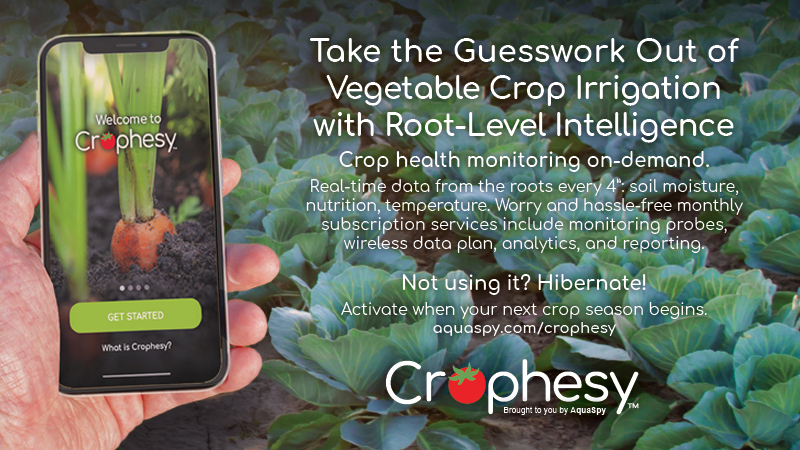USDA to Allow Imports of Citrus from China
The general public has taken up the call to “Buy American” as mainstream media headlines tell of growers being forced to disk under crops as markets dry up due to the COVID-19 pandemic. The unfolding epidemic has reminded the public how important U.S. growers are in sustaining a stable food supply.
With that in mind, there was frustration over the announcement from UDSA-ARS that it would allow imports of certain citrus varieties from China. Beginning on April 15, the ruling authorized the importation of five types of commercially produced fresh citrus fruit from China into the Continental U.S. According to the agency, after thorough analysis, APHIS scientists determined that pummelo, ‘Nanfeng’ honey mandarin, ponkan, sweet orange, and Satsuma mandarin fruit from China can be safely imported into the U.S. under a systems approach to protect against the introduction of plant pests.
The agency noted that anticipated imports from China are expected to be relatively small. The majority of China’s fresh orange exports, mostly navel oranges, go mainly to Russia and to neighboring countries in Asia. China’s fresh orange exports to North America, mainly to Canada, are very limited, ranging from 100 to 300 metric tons (MT) per year. The U.S. is a net exporter of fresh oranges. An increase in orange imports of 300 MT per year would be equivalent to about one-fourth of 1% of fresh orange imports from all sources in the 2012-2013 season.
[UPDATE] Florida Agriculture Commissioner Nicole “Nikki” Fried sent a letter to USDA Secretary Sonny Perdue strongly opposing the USDA’s decision to allow the import of fresh citrus from China.
In addition to harming the domestic citrus industry by increasing foreign imports, the Commissioner noted, this misguided policy change by USDA’s Animal and Plant Health Inspection Service (APHIS) during the COVID-19 pandemic poses serious risk to the health of Florida’s citrus industry and many other crops. This is due to the potential introduction of devastating invasive pests and diseases found in China. In the past 15 years, Florida’s citrus industry has seen a production drop of 75% due to huanglongbing (HLB), commonly known as citrus greening.
The letter from Commissioner Fried reads in part:
“After all that Florida’s industry has overcome and the current challenges facing our farmers, to put our agriculture industry at risk by allowing both the introduction of additional invasive species as well as increased foreign competition is beyond misguided. To kick our agriculture community while they are down, and when our domestic food supply depends on them more than ever, is just plain wrong. I strongly urge the USDA to put the well-being of Florida’s and America’s farmers first and rescind this misguided proposal.”
The letter may be downloaded here.
Commissioner Fried also noted that the timing of the USDA’s decision during COVID-19 could exacerbate issues facing Florida’s agriculture community. Fried further stated in the letter:
“The dire situation on the ground due to COVID-19 market disruptions is exacerbating the decades-long impact that illegal dumping of Mexican produce has had on domestic producers of seasonal produce.”
Commissioner Fried was joined by Florida agriculture industry leaders in voicing opposition to the APHIS decision.
“The Florida citrus industry is already facing a devastating non-native disease called HLB that originated in China and has ravaged our groves over the past decade. So the threat is real. We need to take another look at this decision. Add to the fact it will hurt growers by flooding domestic markets with Chinese citrus and it really is a double whammy,” said Florida Citrus Mutual Executive VP and CEO Mike Sparks.
“Florida Farm Bureau appreciates USDA’s work to keep domestic producers in business during the current COVID-19 crisis, but the importation of Chinese citrus will only compound the mounting challenges faced by our growers. Our citrus industry cannot afford this setback,” stated Florida Farm Bureau Federation President John L. Hoblick.
With the updated RMD (Risk Management Documents) in 2019, a total of 22 pests and diseases of quarantine significance were noted from China that could follow the pathway of introduction into the Continental U.S. These included three different mites, a leaf miner, eight different Bactrocera fruit flies, Asian corn borer, Asian citrus psyllid, a bacterial pathogen causing citrus greening, a bacterial pathogen causing yellowing, a complex of bacteria causing citrus canker, three different fungi (one causing citrus black spot), Citrus bent leaf viroid and Satsuma dwarf virus. All 22 are quarantinable pests and pose a significant risk to Florida’s citrus industry and many other agricultural crops grown in the state including avocado, blueberries, citrus, peaches, peppers, persimmons, tomatoes, and many other valuable crops.










